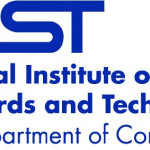- Sektör: Technology
- Number of terms: 2742
- Number of blossaries: 0
- Company Profile:
The National Institute of Standards and Technology (NIST) — known between 1901 and 1988 as the National Bureau of Standards (NBS) — is a measurement standards laboratory and a non-regulatory agency of the United States Department of Commerce. The institute's official mission is to promote U.S. ...
An optimization problem to find the largest number of mutually disjoint subsets that cover a given set of sets.
Industry:Computer science
An optimization problem with an enlarged feasible region (and extended objective function) compared with an original optimization problem. Typically, the relaxation is considerably easier to solve than the original.
Industry:Computer science
An order defined for all pairs of items of a set. For instance, ≤ (less than or equal to) is a total order on integers, that is, for any two integers, one of them is less than or equal to the other. Formal Definition: A total order is a relation that is reflexive, transitive, antisymmetric, and total.
Industry:Computer science
An order defined for some, but not necessarily all, pairs of items. For instance, the sets (a, b) and (a, c, d) are subsets of (a, b, c, d), but neither is a subset of the other. So "subset of" is a partial order on sets. Formal Definition: A partial order is a binary relation that is reflexive, transitive, and antisymmetric.
Industry:Computer science
An ordered deque, that is, items may only be added to or removed from the head or the tail. An item is added to the head if it is smaller than the current head. An item is added to the tail if it is greater than the current tail. Items are never inserted into the middle, rather, an additional pile may be created.
Industry:Computer science
An ordered tree of order k ≥ 0, that is B<sub>k</sub>, whose root has k children where the i<sup>th</sup> child is binomial tree of order k-i.
Industry:Computer science
An ordering of 2<sup>n</sup> binary numbers such that only one bit changes from one entry to the next. Gray codes for 4 or more bits are not unique, even allowing for permutation or inversion of bits.
Industry:Computer science
An organization of information, usually in memory, for better algorithm efficiency, such as queue, stack, linked list, heap, dictionary, and tree, or conceptual unity, such as the name and address of a person. It may include redundant information, such as length of the list or number of nodes in a subtree.
Industry:Computer science
An undirected graph that has a path between every pair of vertices.
Industry:Computer science
An undirected graph where vertices can be partitioned into two sets such that no edge connects vertices in the same set.
Industry:Computer science
